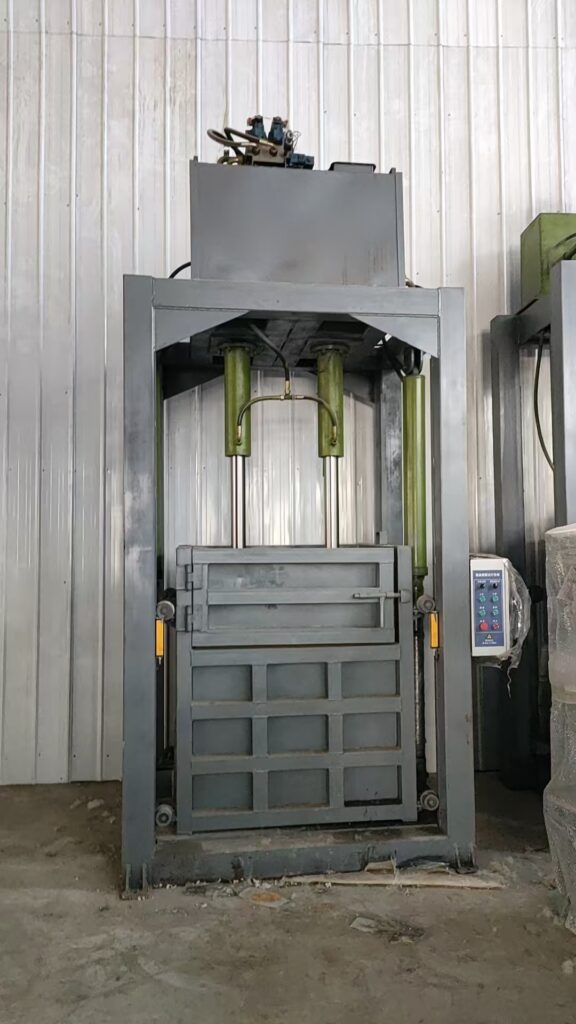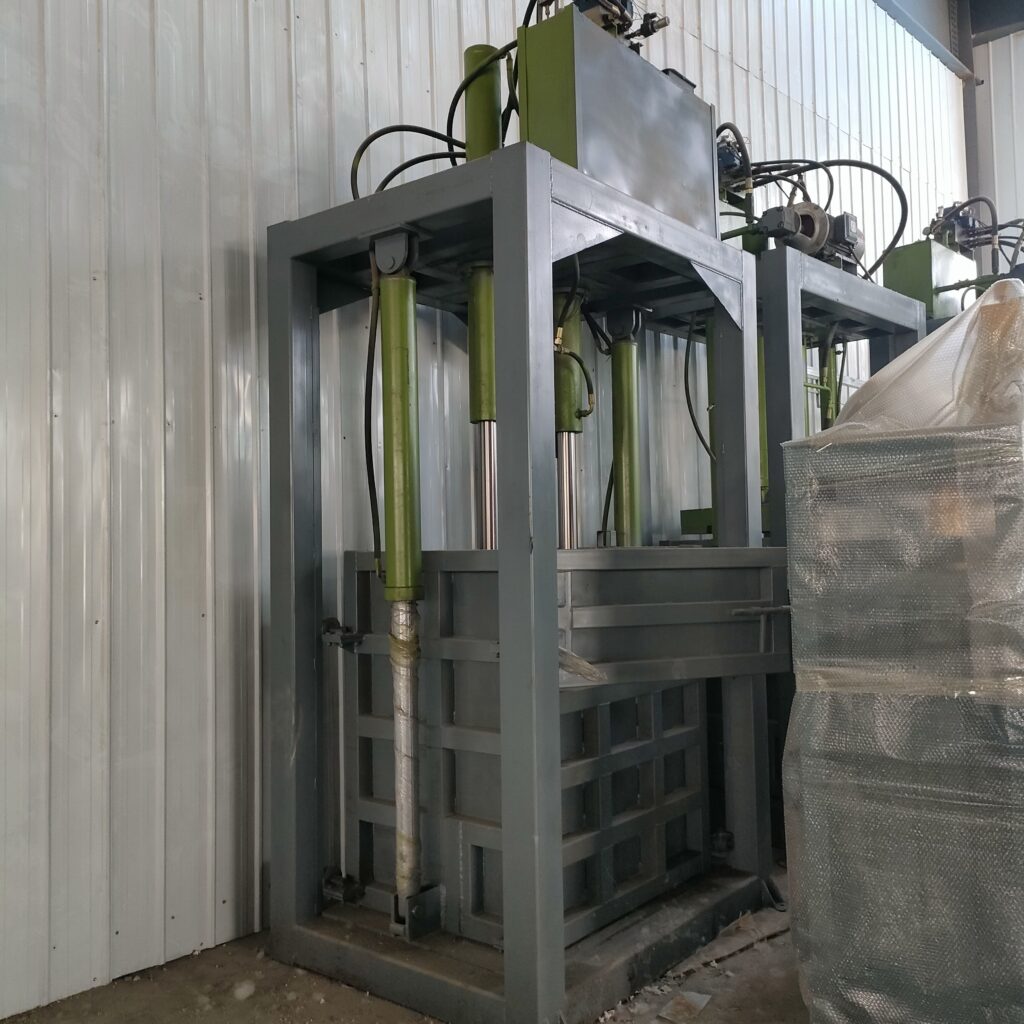In today’s fast-paced world, industries across the globe are producing enormous amounts of textile waste. From garment factories and clothing retailers to second-hand markets and recycling centers, managing large volumes of used or unsold clothes has become a pressing issue. The question many businesses now face is simple: how can we turn this waste into something of value? The answer for many is the clothing baler.
What is a Clothing Baler?

A clothing baler is a specialized machine designed to compress large quantities of used textiles, garments, and fabrics into compact, manageable bales. By applying hydraulic pressure, the baler reduces the volume of clothing waste significantly, making it easier to store, transport, and resell. These machines come in various sizes and configurations, from small vertical balers suitable for small shops to heavy-duty horizontal balers ideal for large factories and recycling plants.
The Growing Need for Clothing Balers
The fashion industry alone is responsible for producing millions of tons of textile waste annually. Fast fashion, in particular, has led to an increase in unsold inventory and discarded clothing. Businesses, both large and small, need an efficient way to handle this growing problem. Without a proper solution, companies face rising storage costs, logistical challenges, and environmental concerns.
Clothing balers solve these issues by offering a streamlined, cost-effective method for managing textile waste. Instead of allowing clothing to pile up and occupy valuable space, businesses can compress it into neat, stackable bales.
Benefits of Using Clothing Balers
1. Space Optimization
Textile waste is bulky and takes up significant storage room. A clothing baler can reduce the volume of waste by up to 90%, freeing valuable warehouse or shop floor space. This optimization not only improves workplace organization but also helps businesses operate more efficiently.
2. Cost Savings
By reducing waste volume, businesses save money on storage and transportation. Compressed bales are easier and cheaper to ship compared to loose clothing, cutting down logistics costs significantly.
3. Enhanced Recycling Opportunities
Baled clothing is easier to sell to recycling companies or second-hand dealers. The uniform size and compact form of bales make handling more convenient, increasing the likelihood of finding buyers and expanding recycling networks.
4. Environmental Responsibility
Sustainability is no longer just a buzzword; it is a responsibility. By using clothing balers, businesses contribute to reducing landfill waste and promoting recycling. This commitment enhances their corporate image and aligns with global sustainability goals.
5. Improved Safety and Cleanliness
Loose clothing piles can be hazardous, creating fire risks and cluttered workspaces. Balers help maintain a safer, cleaner, and more organized working environment.
Industries Benefiting from Clothing Balers
- Garment Manufacturers: Handle production scraps and unsold stock more efficiently.
- Clothing Retailers: Manage seasonal returns and unsold items in a cost-effective way.
- Recycling Centers: Streamline the collection and resale of used textiles.
- Charities and NGOs: Package donated clothes for distribution or resale.
How Clothing Balers Add Value

The value of clothing balers goes beyond waste management. They create opportunities for additional revenue streams. For example, baled clothing can be exported to international markets, particularly in regions where second-hand clothing is in high demand. Additionally, recycling companies often pay more for neatly baled textiles compared to loose waste.
By converting waste into valuable resources, businesses not only reduce their disposal costs but also open doors to profitability.
Choosing the Right Clothing Baler
Selecting the right baler depends on several factors:
- Volume of Waste: High-output factories may require horizontal balers, while small retailers can manage with vertical models.
- Available Space: Compact balers are designed for limited spaces, whereas larger facilities can accommodate heavy-duty machines.
- Type of Material: Some balers are better suited for lightweight fabrics, while others can handle bulkier items like denim or bedding.
- Automation Needs: Fully automatic balers reduce labor requirements but may come with higher upfront costs.
By evaluating these considerations, businesses can invest in a baler that matches their unique requirements.
The Future of Textile Waste Management

As sustainability becomes a core focus worldwide, clothing balers are set to play a vital role in textile waste management. Governments are implementing stricter waste regulations, and consumers are demanding more eco-friendly practices. Businesses that adopt baling solutions today position themselves ahead of the curve, both in terms of compliance and reputation.
Moreover, advancements in baler technology are making these machines smarter, more energy-efficient, and easier to operate. With innovations such as automated feeding systems, IoT connectivity, and improved hydraulic designs, the future of clothing baling looks promising.
Conclusion
From managing storage and reducing costs to promoting recycling and sustainability, clothing balers offer a practical, valuable solution for businesses dealing with textile waste. They help transform what was once considered waste into new opportunities for revenue and environmental responsibility.
In an era where efficiency and sustainability are paramount, it’s no surprise that more and more businesses are choosing clothing balers. Turning waste into value has never been more achievable, and with the right baler, your business can be part of the change.
Real-World Applications and Future Outlook
To put the benefits into perspective, consider a garment factory that produces large volumes of offcuts and unsold stock. Before installing a clothing baler, the factory struggled with storage costs and frequent waste collections. After adopting a 60-ton vertical baler, they reduced waste volume by over 80%, cut transport costs in half, and began selling baled fabric to local recyclers for extra income. The return on investment was realized within the first year.
Similarly, many NGOs and charities that deal with clothing donations have found balers invaluable. By compressing donated items into uniform bales, they can ship larger volumes at lower costs, enabling them to expand their reach and help more communities.
Looking ahead, the role of clothing balers will continue to grow as part of a broader circular economy. Businesses that integrate baling solutions are not only addressing immediate operational needs but also preparing for a future where recycling, reusing, and resource optimization are essential for competitiveness. In this way, clothing balers are more than just machines—they are tools for long-term sustainability and business growth.
